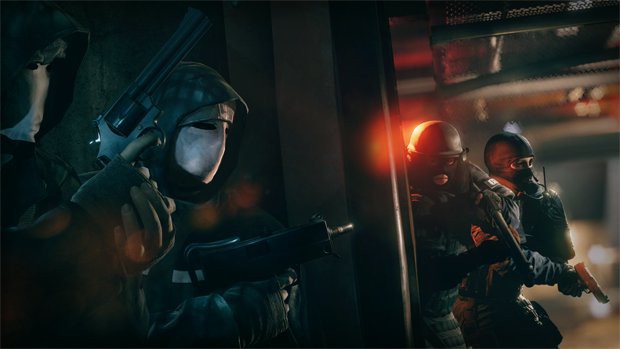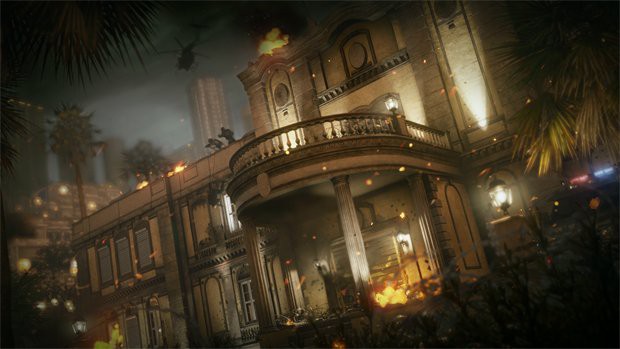A must play game for all the gamers out in the world
From the protectors' point of view, it's Straw Dogs. In the wake of barricading entryways and spreading out spiked metal under windows there's nothing to do except for the tune in to the removed smash of boots on glass, a developing arrangement of stifled blasts, substantial breathing, and to top it all off, quietness. For the assailants it's more DIY SAS as they bring out heavy hammers, set explosives, and get ready for rupture. At that point poop hits the fan.
That is the arrangement for Hostage Rescue, an aggressive, round-based online mode in which one five-man group must shield a dismal confronted NPC from another who need to take him. There are three primary modes in Ubisoft's multiplayer centered shooter — alone against heaps of AI adversaries, with four mates against heaps of AI foes, or in five-on-five multiplayer — and the one consistent is profoundly point by point insides where players jab through floors, crush roofs, and blow openings in dividers. Prisoner Rescue, however, feels like Siege's inside.
Strafe-filled moves of death are supplanted by pounding wars of wearing down with individuals inclined on midsection or back looking out from behind a bookshelf or pool table in endeavors to show the littlest objective conceivable. Genuine experiences are short and sharp. Here the primary individual to shoot is regularly the victor - procedure comes in getting to that situation in any case by going through CCTV cameras set around the earth, looking for shadows under door jambs, or ad libbing peepholes in drywall to watch adversaries.
Small scale destructible structures opening up a little bit at a time — as opposed to falling discount — brings about a flighty encounter where, in spite of close limits, dangers originate from anywhere.There's not much space to move but rather there's a lot of room to think. It's practically similar to each room of the biker clubhouse, presidential plane, downtown bank, army installation, white collar class rural dwelling and more is a level in itself, since each three-minute round presents an alternate situation.
Microtransaction Infraction
You can purchase gaudy weapon skins, XP lifts, and administrators with either money or in-game credits. For instance of significant worth, a three-day XP lift costs 350 credits, and an administrator costs 1000 credits (each time you open an administrator the cost of the following one increments), and a pack of 1200 credits costs £7.99. In spite of the fact that you can acquire credits through play, administrators are costly, and following ten hours I had just opened a fourth of them. Over a discretionary £25 season pass offering access to new administrators, maps, and skins coming throughout the following year, it feels a ton over a full-estimated game.

One sees my group crouch behind vehicles and power devices in a carport, removing the stairway with toxin gas so as to channel aggressors through a course we have our sights prepared on. In another we spot energized spiked metal under second floor windows so rappelling trespassers endure harm upon the section at that point hunker in pantries and showers. Afterward, as assailants this time, I strike against dividers to stand out while my colleagues storm through the roof. Randomized prisoner areas request another methodology each time, while multi day/night alternatives adjust the environment.
That arbitrariness once in a while goes excessively far as you're kept from picking a particular mode or guide. Need a couple of rounds on your preferred stage? Really awful you don't get a decision - and there's not even chance to cast a ballot. Likewise, with such little safety buffers and significantly littler focuses on, it's a disgrace hit discovery is so spotty. The killcam has demonstrated me being shot by individuals I couldn't see, and biting the dust without being taken shots by any stretch of the imagination. Irregularity implies some of the time you'll take care of business even before notice harm markers appear on screen, in spite of the kill cam demonstrating your executioner peppering you with shots. A demanding game requests demanding mechanics, yet Siege needs work in such manner.
You can vent dissatisfactions on floods of PC controlled psychological militants in community mode Terrorist Hunt, a deadly contradiction to the multiplayer's moderate consume. Here your five-man group needs to penetrate an area and incapacitate a bomb, separate a prisoner, or only straight up slaughter heaps of exceptionally terrible men. It's tied in with crawling through entries with four administrators close behind, looking out from the scratched survey cut of a ballistic shield or looking down a trembling reflex sight to examine for indications of development.
One foggy level set on a grounds in the prompt consequence of a toxic substance gas assault makes you handle the test at strolling pace in the event that you charge directly into a pack of miscreants, however it's a rush notwithstanding as you travel down diverts together in one firm unit like sink unblocker, purifying them of fear monger rubbish. Continually having a man at your back gives the game a solid feeling of collaboration.

 100
Play
100
Play
In reality, Siege is multiplayer completely. Absolutely single-player choices are constrained to ten five-minute missions that demonstration progressively like instructional exercises. There's one in which you utilize a computer generated experience sight to recognize bombs in an Oregon compound and another where you kill fear mongers in a Hamburg dock, however its small length (you can finish everything in 60 minutes) implies a practically complete nonappearance of advance for solitary wolves.
No, this is about the interchange between classes crosswise over online aggressive modes and center. Every administrator has an interesting ability, and there are 20 at dispatch. Models incorporate Fuze, who shoot group projectiles through dividers, Sledge, who slams them down with a mallet, Blitz and his flashbang mob shield, and Doc, who resuscitates from separation with a syringe weapon. Before long come astute systems, for example, raising shields in entryways the adversary must bounce over, stopping your RC ramble in corners to watch rivals, and shooting out windows to monstrosity out adversaries.
Annoyingly, you need to pay to open these administrators (see 'Microtransaction Infraction' above). Indeed, you can acquire money through play, however the moderate pace of aggregation pushes you towards hacking up money. Skins and XP lifts are a certain something, and Siege has those in plenitude, yet approaching additional cash for non-beauty care products, for example, classes - regardless of whether that money is in-game or real - feels voracious. You could make the contention they're alternate ways, yet why? This is as of now a full-estimated game.
Coming up short on a battle and to a great extent multiplayer-just, the first Rainbow Six game in quite a while offers something extraordinary. Similarly, Fora shows you zeniths, and IL-2 Sturmovik teaches you on the Immelmann Maneuver, this schools you in SWAT without feeling like a dry sim. Methods appropriate in a prisoner circumstance apply here: check your corners, present the littlest objective conceivable, and convey whatever customized equipment you can get your hands on.
Rainbow Six Siege's computing, climactic showdowns feel new in a classification generally worried about development. You're less headbutting ram and progressively looped snake here. Microtransactions and an absence of singleplayer exercises represent a mark against it, however there's nothing very like laying a laser tripwire over a window, hunching in an organizer, and holding on to jump on the following individual through it.
This game was explored on PC at an audit occasion.


